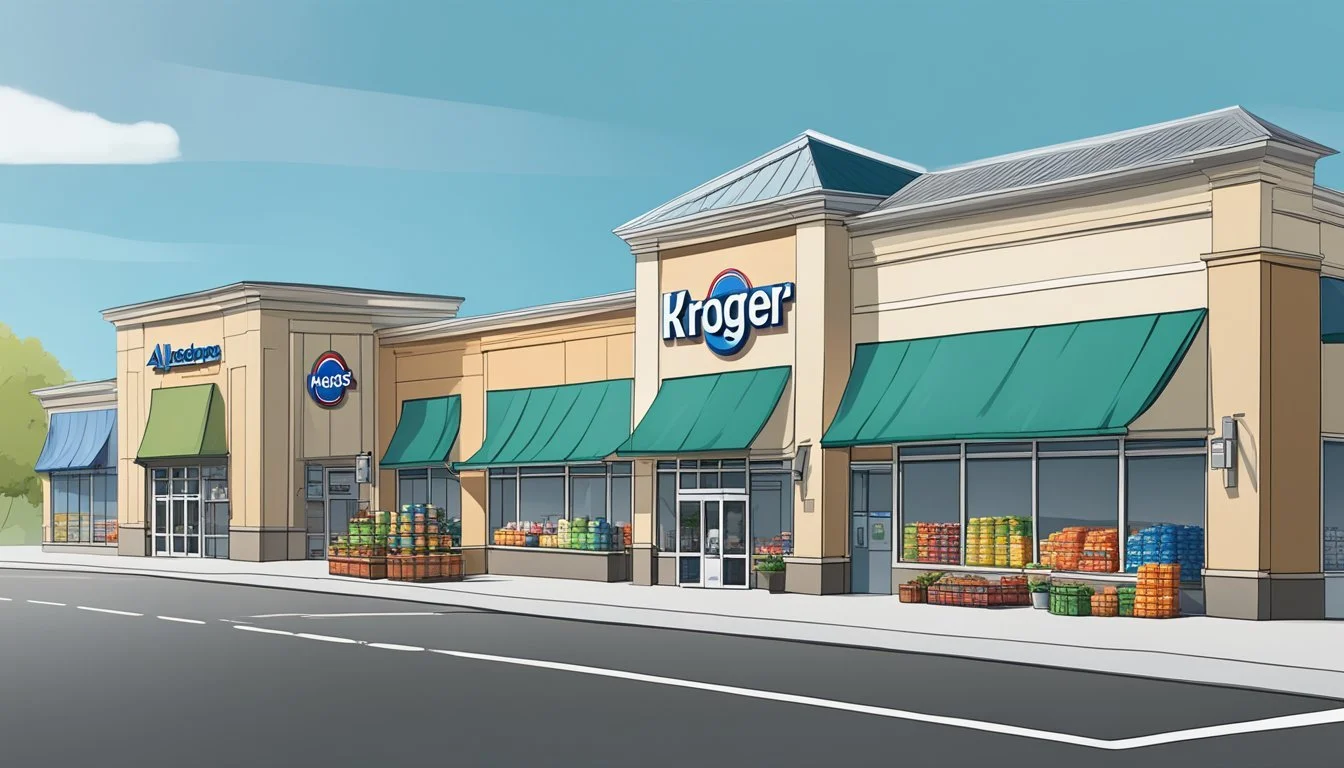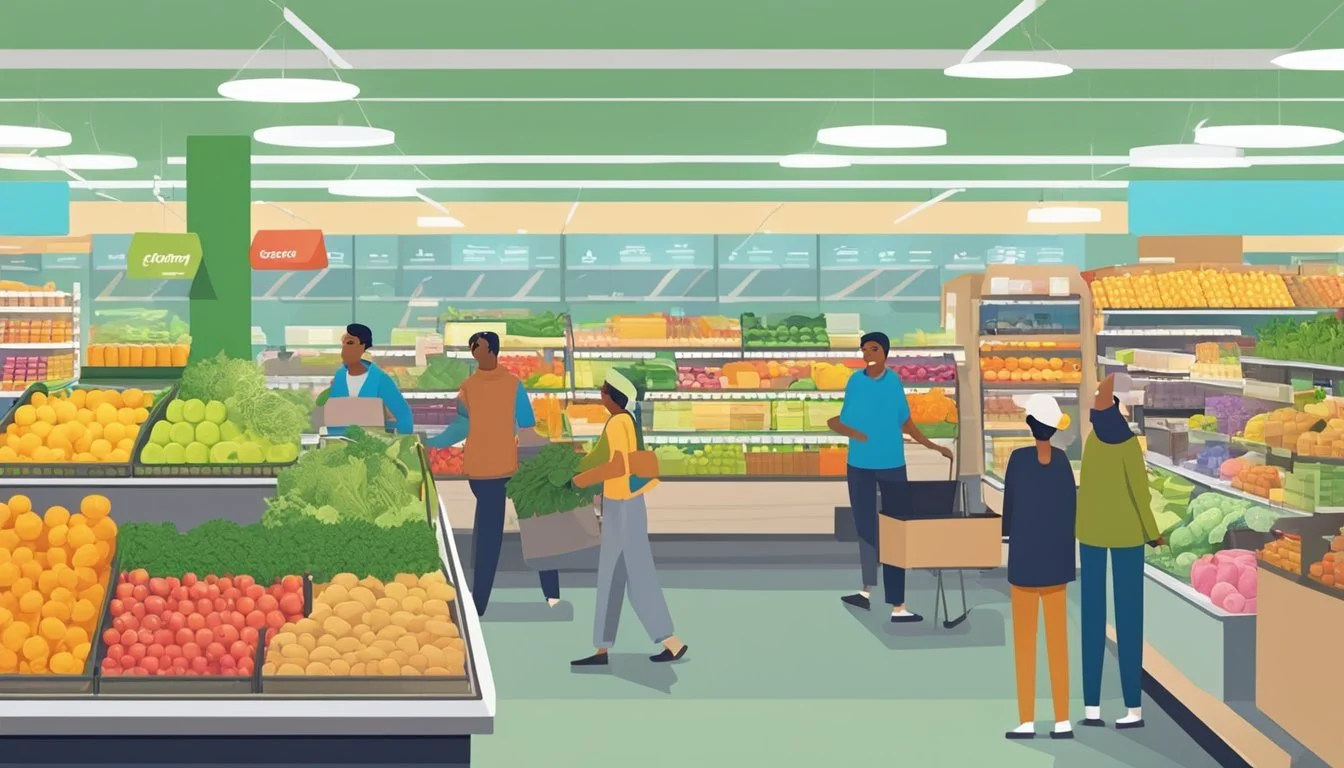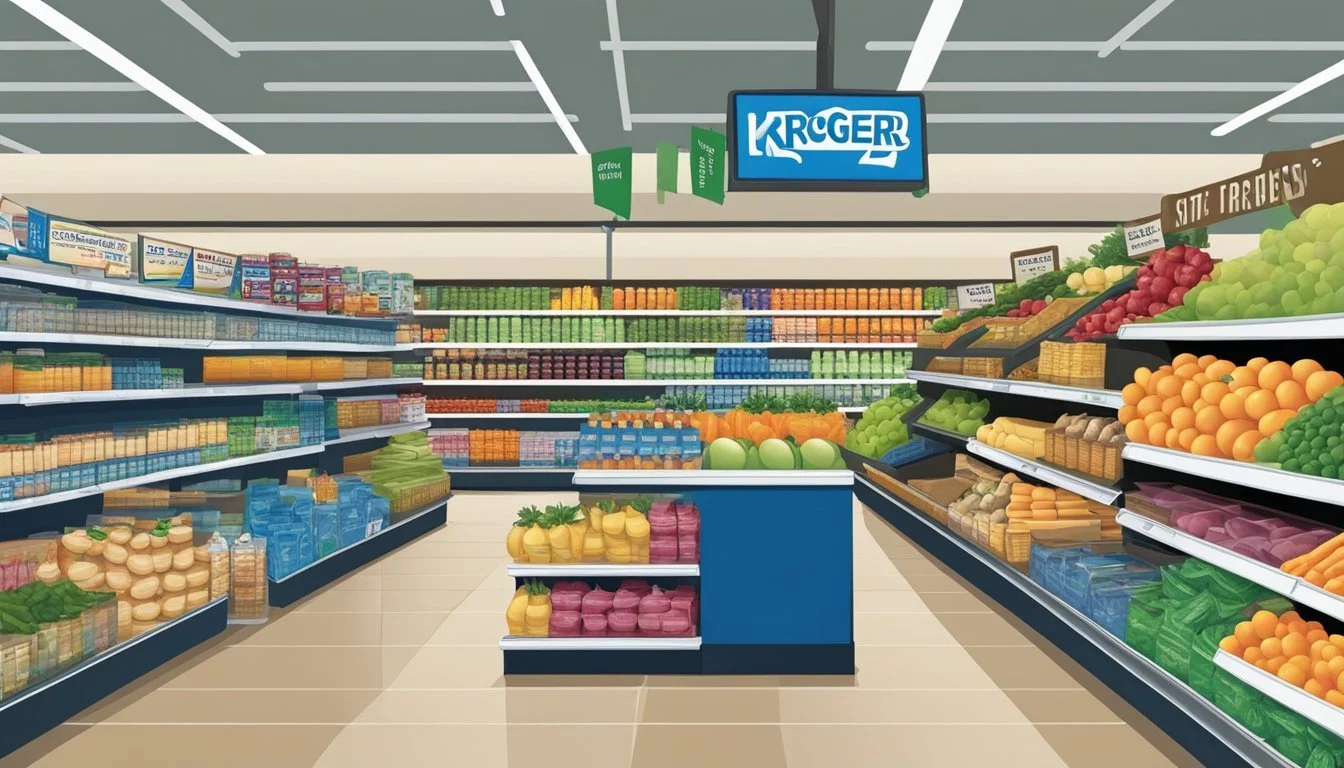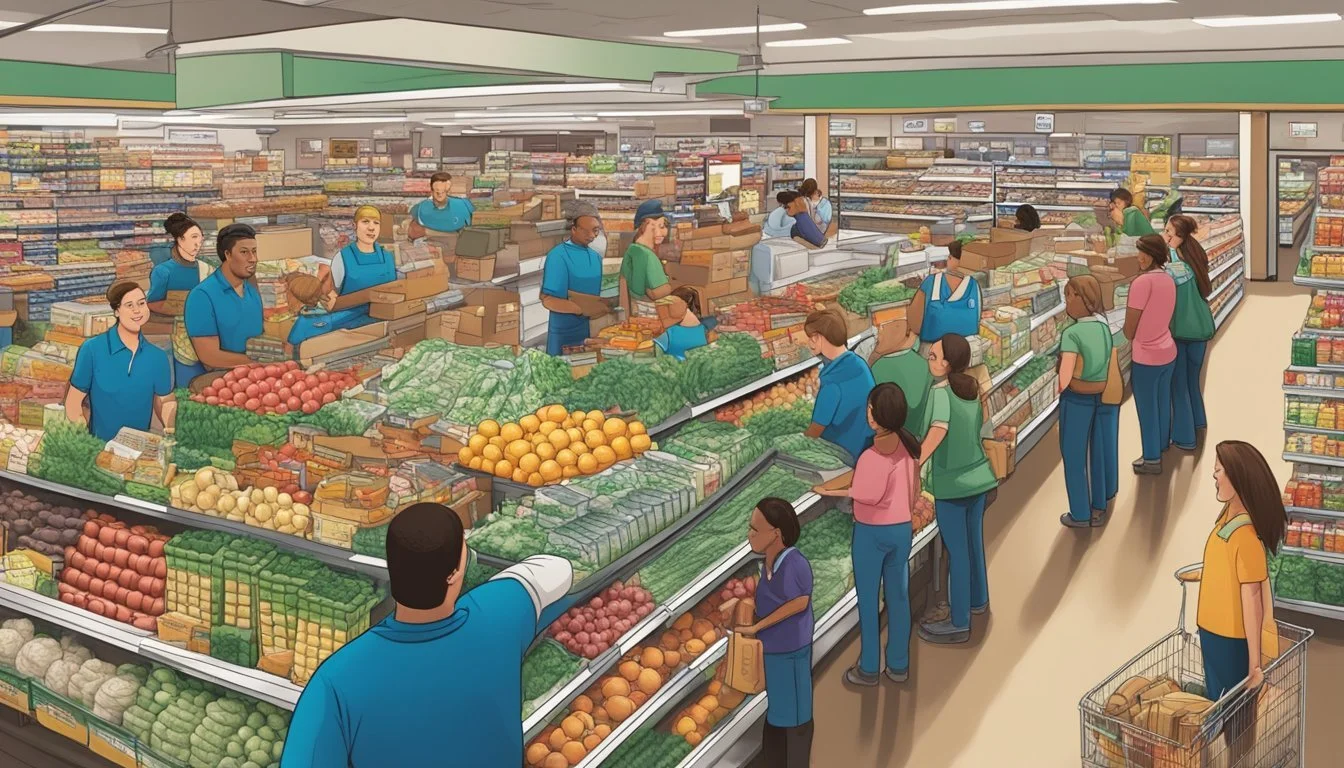Kroger vs Albertsons
Comparing Prices, Selection, and Shopper Experience
Part of Our Grocery Store Guide with Details on Kroger and Albertsons
When assessing the merits of Kroger versus Albertsons, customers often consider factors such as pricing, product variety, and store availability. Kroger, a long-standing and widespread grocery chain, is noted for offering a broader selection of items and generally lower prices compared to Albertsons. This cost efficiency comes into play with Kroger being reported to be anywhere from 11% to 56% more affordable than Albertsons, which can be a significant factor for budget-conscious shoppers.
Albertsons, on the other hand, while it may have fewer products and potentially higher prices, has a record of fewer product recalls, suggesting a commitment to quality that some consumers might prioritize. Both Kroger and Albertsons operate numerous stores, with Kroger available in more states, providing greater access to customers across different regions. With the prospect of a merger between these two retail giants being discussed, customers are keenly interested in how this consolidation might affect their shopping experience, including store presence and food prices.
Company Overviews
In the landscape of American grocery retail, Kroger and Albertsons stand as giants, each with distinct strategies and market footprints. The following subsections delve into their respective market presences and brand portfolios.
Kroger's Market Presence
Kroger, headquartered in Cincinnati, Ohio, is one of the largest grocery retailers in the United States. It operates a vast network of approximately 2,750 stores across 35 states. Under its umbrella, it features a variety of supermarket formats and brands, including Harris Teeter, Ralphs, and Fred Meyer. These stores offer a combination of food and drugstore items, catering to a broad consumer base seeking convenience and variety.
Albertsons' Brand Portfolio
Albertsons, based in Boise, Idaho, is another principal player in the grocery sector. Its brand portfolio is extensive, housing well-known names such as Safeway and Vons. These brands enable Albertsons to deliver a diverse shopping experience tailored to different markets and customer preferences. Albertsons operates a substantial number of stores, and its acquisition strategy has been instrumental in bolstering its presence in the competitive grocery market.
Financial Performanc
This section dives into the financial dynamics of Kroger and Albertsons, examining their revenue and profits, as well as their market share and growth trajectories.
Revenue and Profit Analysis
Kroger reports a broad operational footprint with 2,750 stores in 35 states. For fiscal 2024, Kroger anticipates a lift in identical sales, excluding fuel, ranging from 0.25% to 1.75%. The company has also projected its full-year adjusted earnings per share, reflecting its stable financial health amid consistent grocery demand.
Albertsons, on the other hand, shows a notable payout ratio for earnings versus free cash flow, with significant cash movements largely associated with debt reduction efforts. Its financial activities suggest a strategic focus on managing liabilities while maintaining profitability.
Market Share and Growth
Kroger, with its expansive network, holds a significant proportion of the US grocery market. The proposed merger with Albertsons could amplify this, potentially reshaping the market landscape. Through this merger, Kroger has the potential to expand its market presence, indicating a positive trajectory for growth.
Analysts like those from J.P. Morgan have their eyes on these developments, understanding the implications such a merger could have on market share distribution. Despite regulatory challenges, if the merger proceeds, the combined entity would be positioned to command a larger market share, intensifying competition within the grocery sector.
Store Experience and Customer Satisfaction
The section delves into the distinctive aspects of Kroger and Albertsons stores, focusing on the shopping environment, the quality of customer service, and the range of private label products available.
Shopping Environment
Kroger offers a comfortable shopping environment that often includes wider aisles and a well-organized layout. This makes it easy for customers to locate products. Albertsons also provides a clean and welcoming atmosphere, though some shoppers might find certain stores slightly less navigable when compared to Kroger's systematic arrangement.
Customer Service Quality
Kroger prides itself on consistently good customer service, bolstered by investments in associate training and benefits. This dedication is evident in the overall customer satisfaction reported by visitors. Albertsons has shown significant improvement in customer satisfaction, a testimony to its efforts in enhancing service quality across its stores.
Private Label Product Offerings
Kroger:
Known for its wide assortment of quality private label products across various categories.
These products are typically priced competitively, providing value to shoppers.
Albertsons:
Offers a diverse range of private label options, with an emphasis on quality.
Has invested in enhancing its private label line to better compete with national brands.
Pricing and Savings Comparison
In the competitive landscape of grocery retailers, Kroger and Albertsons exhibit distinct pricing strategies and offer various savings opportunities through promotions and loyalty programs.
Everyday Prices
Kroger has publicly committed to investing significant resources to reduce everyday prices for its customers, especially in the wake of its merger with Albertsons. The company announced an investment of $500 million aimed at lowering prices on numerous items across its stores. This initiative suggests that Kroger is gearing up to position itself as a cost-effective option for routine grocery purchases.
Albertsons also strives to offer competitive prices, especially on everyday items. The store's pricing tends to be dynamic, with regular discounts incorporated into the base pricing of products, although the specific figures or the extent of these pricing strategies might vary by location and could be influenced post-merger.
Promotional Deals and Loyalty Programs
Kroger:
Loyalty Program: Kroger offers a loyalty program where customers accumulate points that can be redeemed for discounts on fuel and groceries.
Promotional Deals: Regular weekly ads provide a range of discounts, alongside digital coupons accessible through Kroger’s app or website.
Albertsons:
Loyalty Program: Albertsons' "Just for U" rewards program promises personalized deals based on shopping habits, including digital coupons and reward points.
Promotional Deals: Similar to Kroger, Albertsons presents weekly ads with specific item savings and sometimes offers a "Buy One Get One Free" deal on certain products.
Both retailers design their promotional deals and loyalty programs to enhance savings for their customers, focusing on both short-term promotions and long-term reward initiatives. These deals are a crucial aspect of their strategy to maintain customer loyalty and compete in the market.
Location and Accessibility
When comparing Kroger and Albertsons, it is crucial to examine their geographical distribution and how easily customers can access their stores.
Geographical Footprint
Kroger: Kroger operates a significant number of locations, with 2,750 stores across 35 states. It maintains a strong presence in states such as Ohio, Texas, and California, covering a broad geographic area. In metropolitan areas like Chicago, Kroger stores are often readily available to consumers.
Albertsons: Albertsons, on the other hand, has a substantial presence in states including California, Oregon, Washington, Arizona, Nevada, and Colorado. Specific cities like Los Angeles and Portland have multiple Albertsons locations, ensuring that customers in these regions have access to the stores.
Convenience and Proximity
Both Kroger and Albertsons focus on making their stores accessible to customers:
Kroger ensures that within its operating states, stores are located in both urban and suburban areas, often strategically placed near community centers or along commuter routes to enhance accessibility.
Albertsons prioritizes customer accessibility by maintaining stores in locations that are central to residential areas, making it convenient for customers in surrounding neighborhoods to shop locally.
Both grocery chains have developed strategies to ensure their stores are not just numerous but conveniently located within the regions they serve, with an emphasis on proximity to their customer base.
Merger and Acquisition Activity
The landscape of grocery retailing is poised for a transformation with the Kroger's bid to acquire Albertsons. This section explains the regulatory scrutiny such deals face, their potential impact on the market, and how competitors might react.
Regulatory Impact of Mergers
The Federal Trade Commission (FTC) actively assesses large-scale mergers to prevent anti-competitive practices. In the case of Kroger and Albertsons, the FTC's intervention is crucial, as these two entities represent a significant portion of the market share. Their merger could potentially contravene antitrust laws designed to foster competition and prevent monopolies.
Market Influence Post-M&A
Should the merger proceed, the combined entity could surpass giants like Walmart and Costco in terms of market dominance. This power shift could alter distribution channels, pricing, and the availability of goods. The resulting conglomerate's maneuverability in negotiating better terms from suppliers may tilt the balance, potentially impacting consumer choice and pricing across regions.
Response from Competitors
In anticipation of such a merger, competitors may pursue strategic partnerships or their own acquisitions to bolster market presence. Retailers that compete with Kroger and Albertsons will likely reassess their business strategies, from product sourcing to pricing models, to maintain a foothold in an increasingly consolidated market landscape.
Product Selection and Availability
When shopping at Kroger or Albertsons, customers will encounter a diverse array of products, each chain with its own strengths in selection and product quality. These stores ensure that shoppers have access to a wide range of items, from pantry staples to specialty goods.
Freshness and Quality of Offerings
Kroger often receives praise for the freshness and quality of its produce, which many customers find to be superior. It maintains a robust supply chain that ensures a steady flow of fresh fruits and vegetables. In terms of dairy products, Kroger offers a competitive assortment that focuses on both quality and variety. Albertsons, while also offering fresh produce, is particularly commended for its meat and seafood selection. It stands out with a premium array of choices that cater to consumers looking for high-quality animal proteins.
Organic and Specialty Products
Both Kroger and Albertsons offer a substantial selection of organic and specialty products. Kroger features its own brands like Private Selection and Simple Truth, which include a range of organic options. Albertsons competes with its own lines such as O Organics and Open Nature. These store brands are a response to the growing demand for organic and natural products, reflecting each company's commitment to offering health-conscious choices. When it comes to product variety, both stores are competitive, but specialization in branded products aids in distinguishing each from the other.
Regarding product recalls, an inevitable aspect of retail, both Kroger and Albertsons have experienced them, though the incidents are typically a small percentage of their overall product offerings. It indicates that both stores take customer safety seriously but also highlights the importance of robust quality assurance processes.
Workforce and Employee Relations
Evaluating Kroger and Albertsons from the perspective of workforce and employee relations requires an analysis of wage structures, job benefits, and the level of employee satisfaction. This includes the presence of labor unions and their role in collective bargaining agreements.
Wage Comparison and Job Benefits
Kroger and Albertsons both employ vast numbers of workers nationwide and are subject to scrutiny regarding their wage policies and benefit packages. Kroger, operating 2,750 stores in 35 states, offers its workers various benefits besides competitive hourly wages, such as healthcare coverage, retirement plans, and continuous training opportunities. Albertsons, similarly, provides a comprehensive benefits package that aligns with industry standards, including health insurance and retirement benefits to its workforce. Both companies are substantial employers of unionized workers, adhering to collective bargaining agreements with the United Food and Commercial Workers Union (UFCW), which helps in negotiating wages and benefits for their employees.
Average Hourly Wage at Kroger: $10 to $19
Average Hourly Wage at Albertsons: $10 to $20 (Wages can vary significantly based on role, location, and experience.)
In terms of employee benefits, both companies typically offer:
Health insurance (medical, dental, vision)
Retirement savings plans (401(k) with company match)
Employee discounts
Paid time off
Employee Satisfaction and Unionization
Employee satisfaction in both Kroger and Albertsons is closely tied to their unionization status, as the presence of labor unions helps in advocating for the employees' rights and working conditions. Kroger's workforce is largely unionized, allowing for organized collective bargaining that aims to improve wages and job security for their workers. Similarly, Albertsons employees benefit from union representation, which can lead to higher job satisfaction through secured labor contracts.
Both Kroger and Albertsons pride themselves on being amongst the largest unionized grocery chains in the United States, offering their employees a platform for voice and recognition:
Union Representation: Strong presence of UFCW.
Collective Bargaining Agreements: Facilitate negotiations on wages, benefits, and working conditions.
Employee Satisfaction: Unionization can contribute to a more satisfied workforce, although individual experiences can vary.
Technological Advancements
Technological innovation is pivotal in the grocery sector, impacting both customers' shopping experience and operational efficiency. Kroger and Albertsons have both implemented advanced technologies to streamline shopping and supply chain processes, responding to competitors like Amazon and its Whole Foods markets, as well as discount grocers like Aldi.
E-Commerce and Online Shopping
Kroger has invested heavily in its e-commerce platform, seeking to enhance online shopping experiences and match the digital prowess of giants like Amazon. They have established Customer Fulfillment Centers (CFCs) geared towards automation and rapid delivery, recognizing the needs of a growing segment of consumers who prefer online grocery shopping. Albertsons has also made strides, integrating online capabilities which stand to be bolstered by Kroger's e-commerce technology post-merger.
Supply Chain and Distribution Tech
In supply chain advancements, both Kroger and Albertsons have invested in High-tech Distribution Centers that utilize automation technology to improve distribution efficiency. Kroger’s planned expansion of CFCs in the Northeast and Pacific Northwest aligns with areas where Albertsons holds strong market presence. These tech-forward approaches aim to streamline operations, ensuring product availability and timely delivery in the face of industry competition from players like Amazon and Aldi, which are known for their efficient distribution models.
Legal and Regulatory Concerns
Within the context of the Kroger-Albertsons merger, there have been substantial legal and regulatory hurdles centered around antitrust concerns and the potential implications for consumers.
Antitrust and Competition Law
Federal regulators, particularly the Federal Trade Commission (FTC), have taken legal action, filing a federal lawsuit to block the $24.6 billion merger. They argue that the merger could significantly reduce competition in the supermarket industry. The key contention is that the merger might lead to a decrease in competition which, under antitrust laws, is seen as detrimental to consumers and the market. The FTC's concerns are supported by several state attorneys general who have joined the legal challenges, emphasizing the need to maintain a competitive marketplace.
Consumer Advocacy and Legal Disputes
Consumer advocacy groups are closely monitoring the merger, voicing concerns over potential negative impacts on consumers. These groups back the legal challenges filed by the FTC, citing fears of higher prices, fewer choices, and diminished service quality. A temporary injunction sought by these groups aims to maintain the status quo while the merger's legal disputes are being settled. These legal disputes focus on safeguarding consumer interests and ensuring that their rights are not compromised by potential monopolistic behaviors.
Social and Ethical Considerations
When evaluating Kroger and Albertsons, it is crucial to consider their impact on communities and the environment. Both giants have structured programs addressing community support and environmental sustainability, essential components of their corporate social responsibility.
Community Engagement and Support
Kroger has a dedicated platform, Zero Hunger | Zero Waste, which aims at ending hunger in the communities it serves and eliminating waste across the company by 2025. This initiative focuses on food and nutrition security by responsibly sourcing local products and diverting waste through recycling and food donations. Kroger's Foundation also supports various local and national organizations to uplift communities.
In comparison, Albertsons runs the Albertsons Companies Foundation, which emphasizes strengthening the neighborhoods they operate in. Albertsons has various programs supporting causes such as hunger relief, education, and health and wellness. Their commitment to community well-being includes significant contributions to food banks and support for programs that increase access to healthy foods.
Environmental Sustainability Initiatives
Kroger's approach to sustainability entails a commitment to responsible sourcing, reducing greenhouse gas emissions, and improving packaging to reduce waste. They have set science-based targets to reduce their carbon footprint and have invested in energy-efficient technologies throughout their stores.
Albertsons also recognizes the importance of environmental stewardship and sustainability. It operates with a focus on reducing energy consumption and waste while promoting sustainable seafood and implementing better waste management practices, including more environmentally friendly packaging solutions. The company assesses its operations to mitigate their impact on the planet, contributing to overall sustainability goals.
Both Kroger and Albertsons acknowledge the importance of these social and ethical considerations in their operations, though their methods and specific focus areas may differ.
Conclusion
Kroger and Albertsons, as significant competitors in the grocery market, offer diverse shopping choices to the consumer base. Kroger's strengths lie in its array of in-house brands and the implementation of a robust customer loyalty program. This approach not only garners a dedicated customer base but also positions Kroger as a budget-friendly option in many categories.
Albertsons, contrastingly, accentuates its commitment to customer service with a focus on specialty products. It presents itself as a grocery destination for those seeking distinct and possibly higher-end items.
The competition between these two grocery stores is indicative of the varied consumer needs and preferences shaping the grocery market. While one may excel in pricing, the other competes with service and specialty selection.
Kroger: Often cheaper for common shopping products; benefits from a customer loyalty program.
Albertsons: Known for specialty offerings; focuses on customer service.
The engagement of these two entities in the grocery space underscores the importance of choice and the nuanced demands of grocery shoppers. Their potential merger suggests a significant shift in the grocery landscape, which could amalgamate their respective strengths.
In the context of which is better, the answer is not unilateral but dependent on the shopper's priorities — be it price, product variety, or customer service. Both Kroger and Albertsons cater to different segments of the market, ensuring that shoppers have access to a broad spectrum of grocery options.








